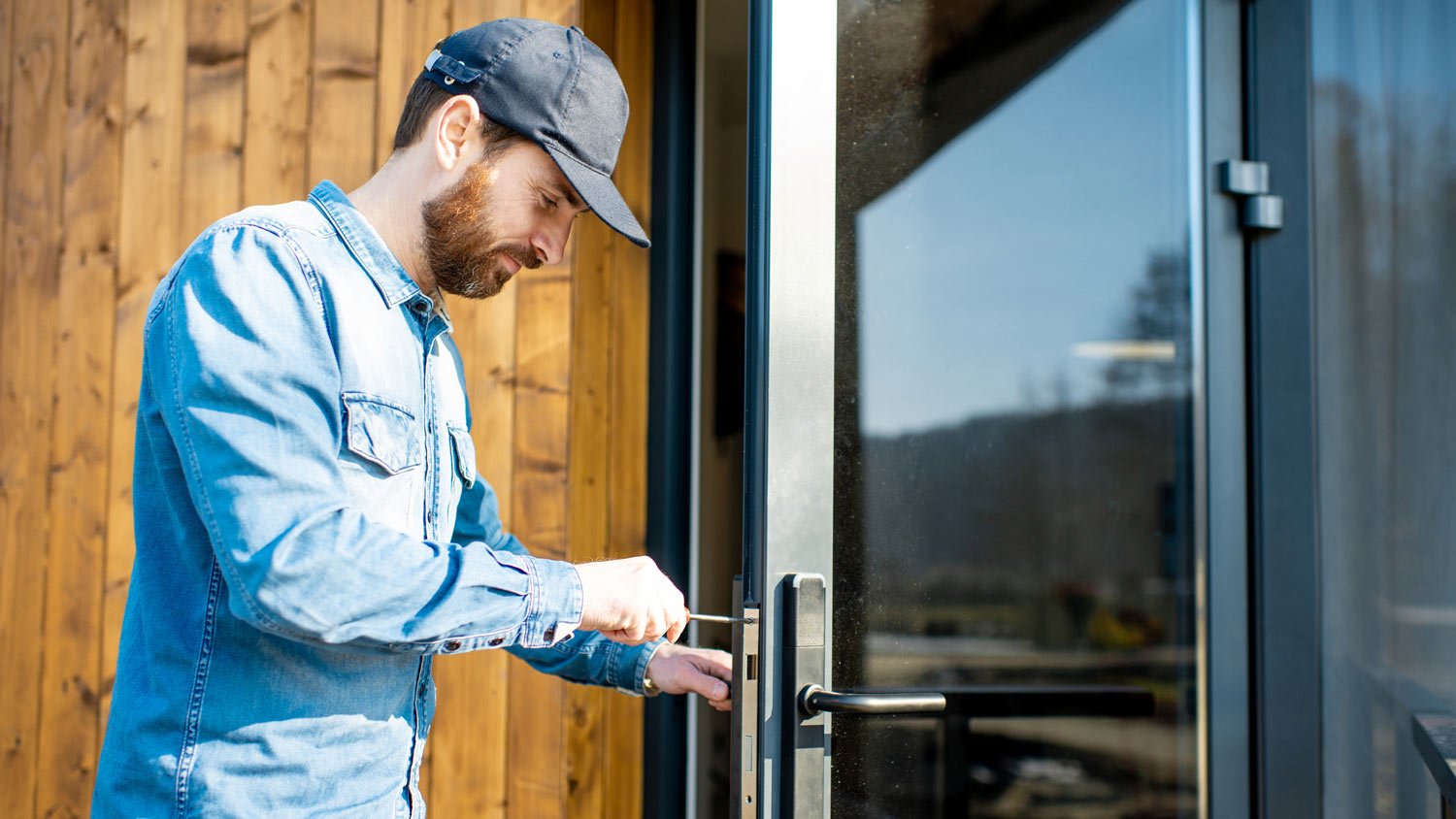How to Change a Door Lock: Full Guide
A little work can make a huge difference in your home’s security


- Ruler or tape measure
- Phillips head screwdriver
- Replacement lock
- Screws (if not included)
You might want to know how to change a door lock for many reasons. Locks are a home’s first line of defense, so you'll want to replace broken or unreliable locks to secure your front door. You should also replace door locks when you move into a new home or experience a break-in. This guide will walk you through the steps to upgrade door locks quickly and simply.
Measuring to Change Door Locks
Before changing locks, you’ll need to use your ruler to measure the backset of your door. The backset is the distance from the door's edge to the lock's center. You’ll also need to measure the diameter of the hole in your door. Both of these measurements will help you select a new unit to match the door.
Take these measurements after removing the old lock, then reattach it until your new lock is purchased and ready to install. You’ll find a variety of different types of door locks at your local hardware store or online.
Remove the Old Lock
 Photo: BanksPhotos / E+ / Getty Images
Photo: BanksPhotos / E+ / Getty ImagesUse your Phillips head screwdriver to unscrew your existing lock. Carefully pull the lock from both sides, remove it from the door, and set the components aside.
Remove the Old Faceplate and Bolt Cylinder
Next, unscrew the faceplate from the edge of the door. With the faceplate removed, you should be able to slide the bolt cylinder out by pushing the mechanism from the hole out through the edge of the door.
Install the New Faceplate and Bolt Cylinder
 Photo: LifestyleVisuals / iStock / Getty Images Plus / Getty Images
Photo: LifestyleVisuals / iStock / Getty Images Plus / Getty ImagesSlide the new bolt cylinder into the door from the edge. Put the faceplate in place, ensuring that it sits flush with the edge of the door. Screw it in tightly.
Install the New Lock
Slide the long metal spindle from the exterior side of the lock through the hole in the bolt cylinder mechanism. The interior side of the lock should meet the exterior side in the middle and attach securely without much effort. With the lock in place, screw it on tightly.
Test the New Lock
 Photo: Elvira Kashapova / Moment / Getty Images
Photo: Elvira Kashapova / Moment / Getty ImagesOpen and close the door several times to ensure that the bolt aligns with the new faceplate and that the new lock turns smoothly.
DIY vs. Hiring a Pro
Changing a door lock is a relatively simple DIY project for the average homeowner. Only a couple of tools are needed, and it can be done in about 30 minutes.
The cost to change a lock depends on the hardware you purchase. Replacement locks start at about $40, but that cost can increase up to $200 for high-end brands. Electronic options can get even pricier at up to $800 for some models. If you decide to hire a pro, the cost to hire a locksmith will add another $75 per hour for labor on average.
That said, there are several benefits to hiring a locksmith near you for the job. You’ll ensure the lock is installed properly, and the installation will often be backed by a workmanship guarantee and manufacturer's warranty. Locksmiths also provide other advice and services, such as a home security survey in which the locksmith evaluates the safety of all your home's entrances.
Frequently Asked Questions
Yes, you should always change your locks after buying a house. Do so as soon as possible after you move in. Otherwise, you won’t know who has working keys to the property, whether they’re spare keys or otherwise. If an intruder gains access to your house with a key, it may not be covered under your homeowners insurance.
There are many times when you should change your locks. When moving into a new house, ensure you know the whereabouts of all working keys. You should also change locks after a home break-in, losing your keys, or if you suspect your keys have been stolen. Always change your locks when they break or become unreliable.
Proper door lock maintenance includes keeping the locking mechanism clean and clear of dirt, dust, and grime buildup, lubricating the lock annually, inspecting and tightening the lock regularly, and treating the door with care. If your maintenance reveals problems, it may be time to replace the lock or have a professional inspect it.
Smart door locks are safe to use and are usually considered safer than traditional locks with keys. While all electronic devices can be hacked, that doesn’t happen nearly as frequently in real life as people may think. You can also invest in multiple locks of different types for enhanced security so you don’t rely solely on one smart lock.



















